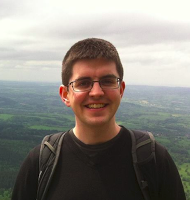Meet Tom Hudson: Project Supervisor
Tell us a bit about you.
I'm an academic in the Maths department. I grew up in London and studied as an undergraduate and PhD student in Oxford, then worked as a post-doc in Paris before coming to Warwick, where I will have worked for 6 years as of this summer. My main research interest is in studying mathematical models for materials, particularly the connection between models at the atomic and continuum scales. Alongside my research, I teach undergraduate courses in Applied Maths, support the teaching of HetSys core module PX914, and co-supervise several HetSys students. I am involved in various Equality, Diversity and Inclusion activities in the Maths department, including co-organising events with the Warwick Maths Society and Autism@Warwick to celebrate the diversity of our staff and students. Outside work, I enjoy playing music, gardening, cooking and yoga.
What excites you about this project?
Nuclear fusion is one of the brightest possibilities for clean, safe energy for the future, but there are a series of hurdles which must be overcome to allow us to realise the potential of this technology. One of these is selecting materials which can withstand the challenges of being in close contact with fusion plasma, and this project will have a direct impact on our understanding of what features such materials need. This project will be an exciting new collaboration with researchers in Culham, and I'm very happy to have the opportunity to work with scientists who are trying to solve these problems. I also think the project is a great opportunity to bring together different expertise and interact with people across a range of disciplines.
In your opinion, why should a student consider a PhD in the HetSys CDT?
Quite frankly, it's the people! We have developed a really collaborative and positive environment within our Centre. Students benefit not only from academic support but pastoral support as well, and there is strong cohesion between the cohorts which has been helped by events such as the Industry Study Events, Research Theme Discussion Events, Annual Conference and seminar series. The training programme is designed to enable our students to become high-quality, interdisciplinary computational scientists who are well prepared for their future careers - wherever they might be. As the training is integrated, they are able to get engaged with their PhD project right from the start of their studentship, which I think is something that makes HetSys really stand out as a CDT.
What are the benefits of getting involved with an industrially-supported project?
Aside from the obvious benefits, such as secondment opportunities, a project like this one offers the opportunity to give the student new perspectives on ways to carry out research in different settings. It will also enable the student to see the impact of their work in a 'real-life' setting which is hugely beneficial, especially when considering your future career options.
Where could this specific research go in future?
Building is currently ongoing in the south of France for ITER, the world's first commercially-viable fusion reactor, which will eventually replace the Joint European Torus (JET) reactor at Culham. First plasma at ITER is scheduled for December 2025, and the plant is expected to be fully operation in 2035. It's clear therefore that there are many years of research work to come to make fusion a reality, both in developing and improving fusion materials, and in ensuring the technology is viable for long-term use. Alongside the direct benefits of this work to making fusion power a reality, I am sure that many fundamental new insights into the behaviour of materials with all sorts of other useful applications will be generated as side-benefits along the way!

